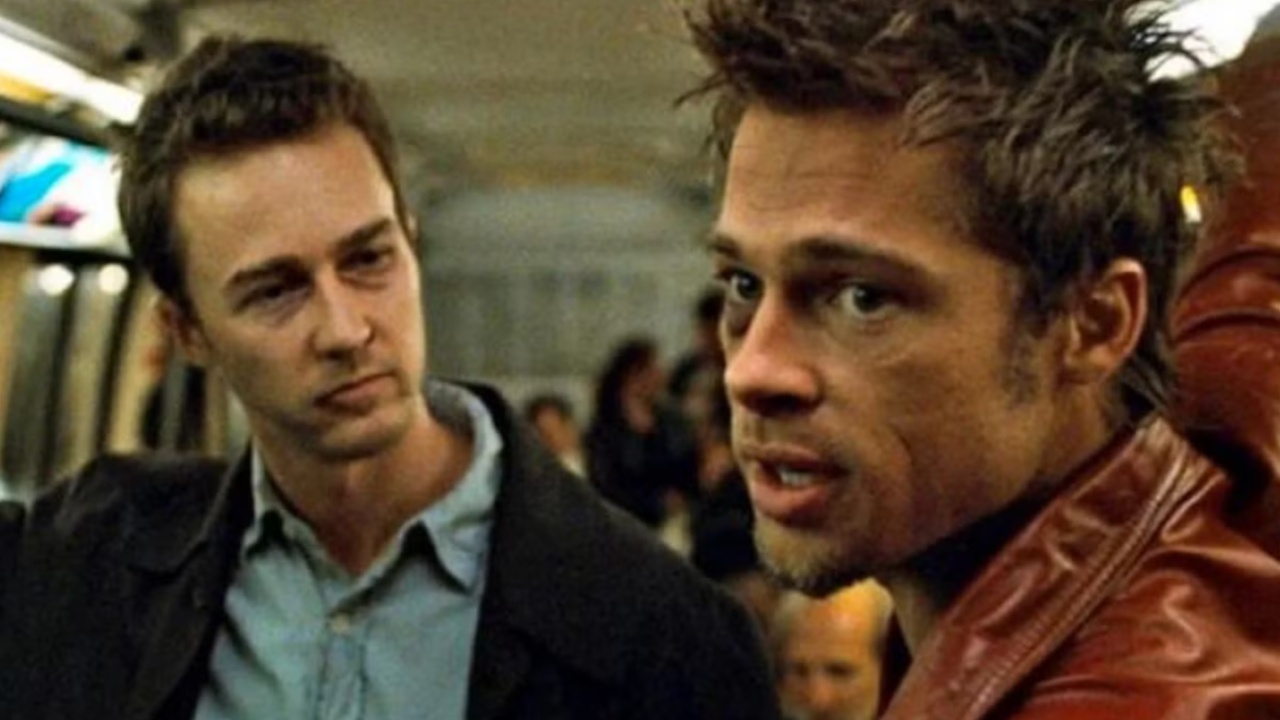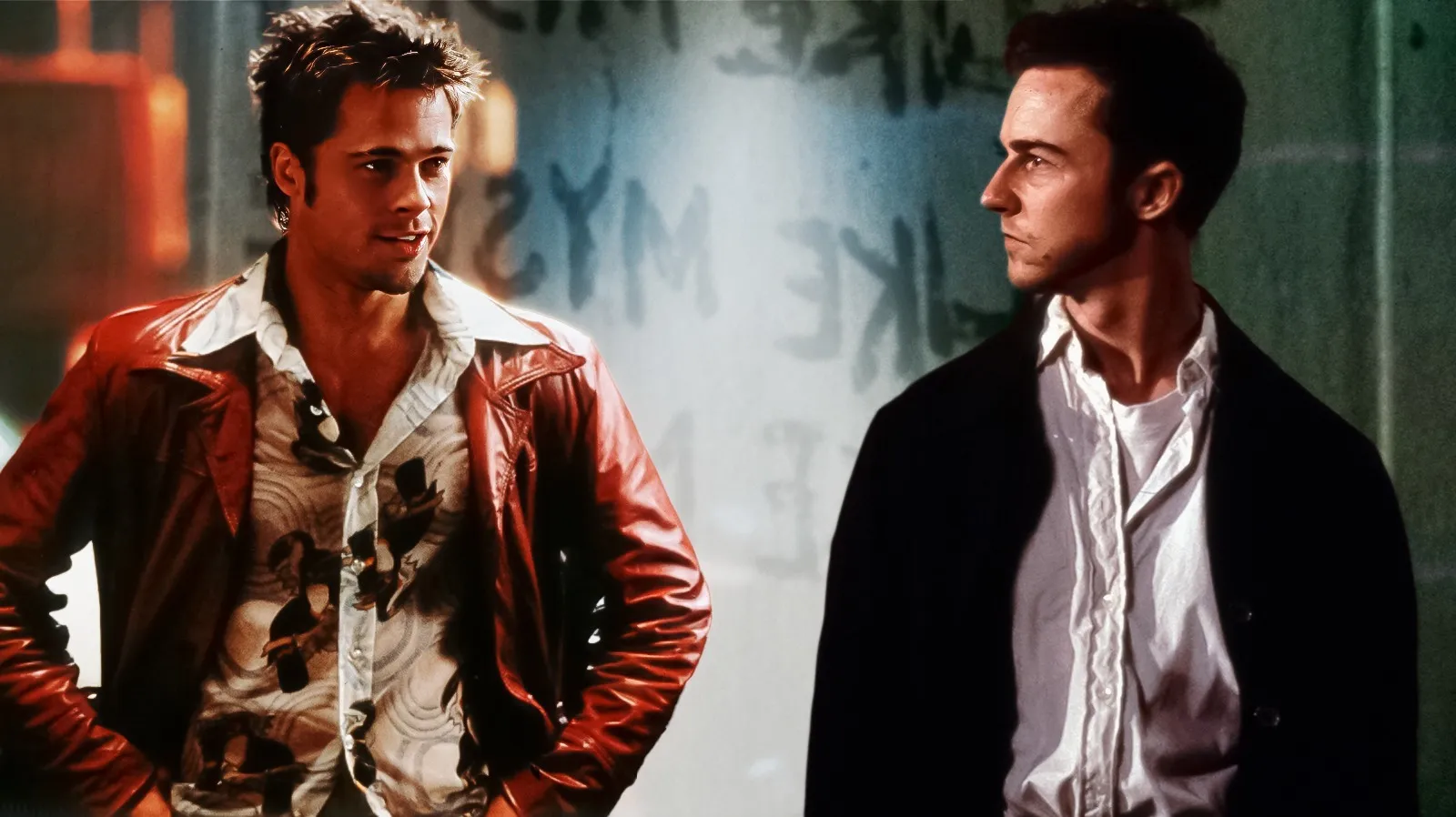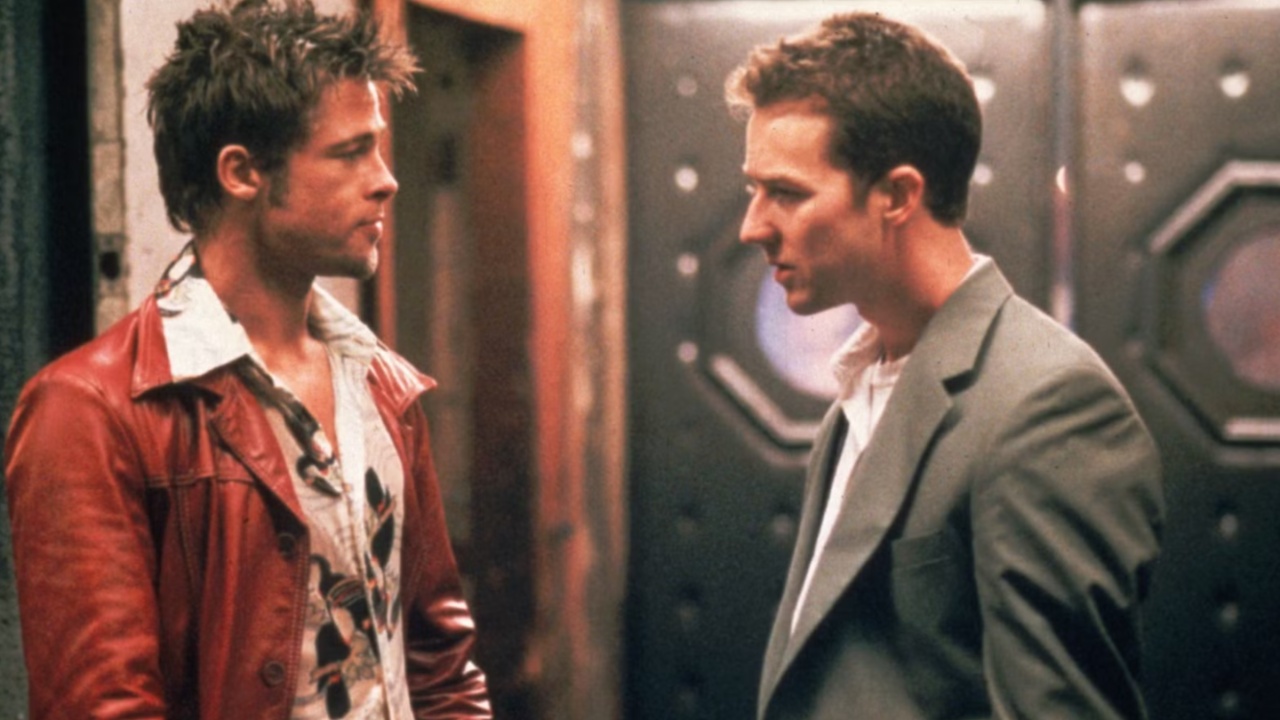The ending of Fight Club is more than a surprising plot revelation. It is a dense, thematic conclusion that highlights the film’s exploration of identity, mental illness, and societal critique. Based on Chuck Palahniuk’s 1996 novel, David Fincher’s 1999 adaptation merges a psychologically complex narrative with sharp social commentary.
The story is told from the perspective of the unnamed Narrator, whose life spirals into chaos after founding the eponymous club. While many focus on the twist revealing Tyler Durden as a figment of the Narrator’s imagination, the ending offers insight into the film’s deeper messages about control, masculinity, and the consequences of unchecked rebellion.
The film begins with the Narrator, played by Edward Norton, struggling with insomnia and a sense of existential discontent. His life changes dramatically when he meets the charismatic and anarchic Tyler Durden, played by Brad Pitt. Through Tyler, the Narrator engages in increasingly extreme and liberating activities, which initially provide a sense of fulfillment.
However, as Tyler’s influence grows, the Narrator realizes the destructive consequences of their actions. This journey sets the stage for the climax, where the audience learns that Tyler is not real but a manifestation of the Narrator’s inner conflict. This revelation forces a reconsideration of all prior events, adding ambiguity and psychological depth to the ending.
In the climactic moments, the Narrator seemingly confronts Tyler by shooting himself, an act that appears to destroy his alter ego. Yet this action does not stop the overarching scheme of Project Mayhem, a global anarchist plot initiated by Tyler. The Narrator is left to witness the city skyline’s destruction alongside Marla, his love interest. The scene reflects both personal triumph and societal consequences. While the Narrator gains control over himself, the chaos he helped unleash continues. This duality highlights the tension between individual agency and collective impact, showing that personal victory does not equate to universal success.

Tyler’s Apparent Death Symbolizes Psychological Struggle, Empowerment, And Emotional Resolution Through Confrontation
The apparent death of Tyler Durden is symbolic rather than literal. Tyler, as a psychological construct, cannot be harmed by bullets. The Narrator’s survival and Tyler’s disappearance result from an act of willpower. By confronting his inner conflict, the Narrator seizes control over his fractured psyche. Shooting himself represents both surrender and empowerment.
This act embodies the paradoxical nature of Fight Club’s commentary on mental illness. By facing his inner turmoil in a self-destructive yet decisive way, the Narrator begins to reclaim his sanity. The film suggests that empowerment comes from directly confronting one’s struggles.
Marla Singer, played by Helena Bonham Carter, serves as a grounding influence throughout the story. Her presence contrasts with the chaos embodied by Tyler, representing both comfort and the Narrator’s self-destructive tendencies. While Tyler is a manifestation of rage and frustration, Marla reflects his struggles with intimacy and emotional vulnerability.
The film intentionally leaves her ontological status ambiguous. Though she appears real, the Narrator’s history of hallucinations raises questions about whether she might also be imaginary. Regardless, Marla’s role at the ending, by standing with the Narrator as he confronts the fallout, provides a form of emotional resolution and human connection.
One of the most debated aspects of the ending is the Narrator’s survival after shooting himself. He shoots in the cheek, allowing the bullet to pass through his jaw without damaging the brain. While painful, this act does not kill him, allowing Tyler to disappear and the Narrator to regain control. This survival is not simply a plot convenience.
It underscores the film’s message that true change requires confronting pain and risk. The physical injury symbolizes the psychological cost of facing one’s inner demons. Fight Club suggests that self-liberation comes with both mental and physical consequences.

The Film’s Finale Explores Masculinity, Consumerism, Psychological Struggle, And Personal Empowerment Visually
The ending reinforces the film’s central themes of anti-consumerism and the crisis of modern masculinity. Tyler’s anarchic rhetoric often critiques the homogenization and commodification of society, using it as a pretext for the Narrator’s psychological unraveling. Tyler embodies traits the Narrator envies, including freedom from societal constraints and unchecked aggression.
At the same time, Tyler represents toxic masculinity, manipulating others, including Marla, for his own ends. The destruction of the skyline in the final scene is both literal and symbolic. It shows the rejection of consumer culture and the dangers inherent in extremist expressions of masculinity.
The film’s conclusion emphasizes personal resolution rather than societal restoration. By “killing” Tyler, the Narrator asserts his agency and confronts his mental fragmentation. The act is self-destructive yet empowering, showing that personal growth often requires facing one’s flaws directly. Watching the destruction unfold with Marla signals acceptance.
The Narrator cannot undo the consequences of his past choices, but he can regain control over his psyche. The ending conveys a dual sense of hope and realism. Peace is possible internally, even if external outcomes remain uncertain.
Fincher’s cinematic ending differs notably from Palahniuk’s novel. In the book, the Narrator survives in a psychiatric facility, and Project Mayhem’s plans remain largely intact. Marla plays a more active role in stabilizing the Narrator, and Tyler plans a more elaborate destructive act.
Additionally, Fight Club 2, a comic book sequel, continues the story and introduces new dynamics. These variations highlight the film’s decision to provide a more visually striking and definitive conclusion. The focus remains on mental conflict, societal critique, and existential rebellion.
Fight Club’s ending has become iconic in film history. Though initially divisive at the box office, the film now enjoys cult status. Fans continue to debate the morality of Tyler Durden and the film’s stance on Project Mayhem, reflecting its capacity to provoke discussion.
The final image of the city skyline collapsing, set to The Pixies’ Where Is My Mind?, demonstrates Fincher’s skill in combining visual storytelling with thematic weight. Ultimately, the ending serves as a meditation on control, self-discovery, and the destructive allure of rebellion in contemporary society. It is both memorable and thought-provoking, securing its place in cinema history.



